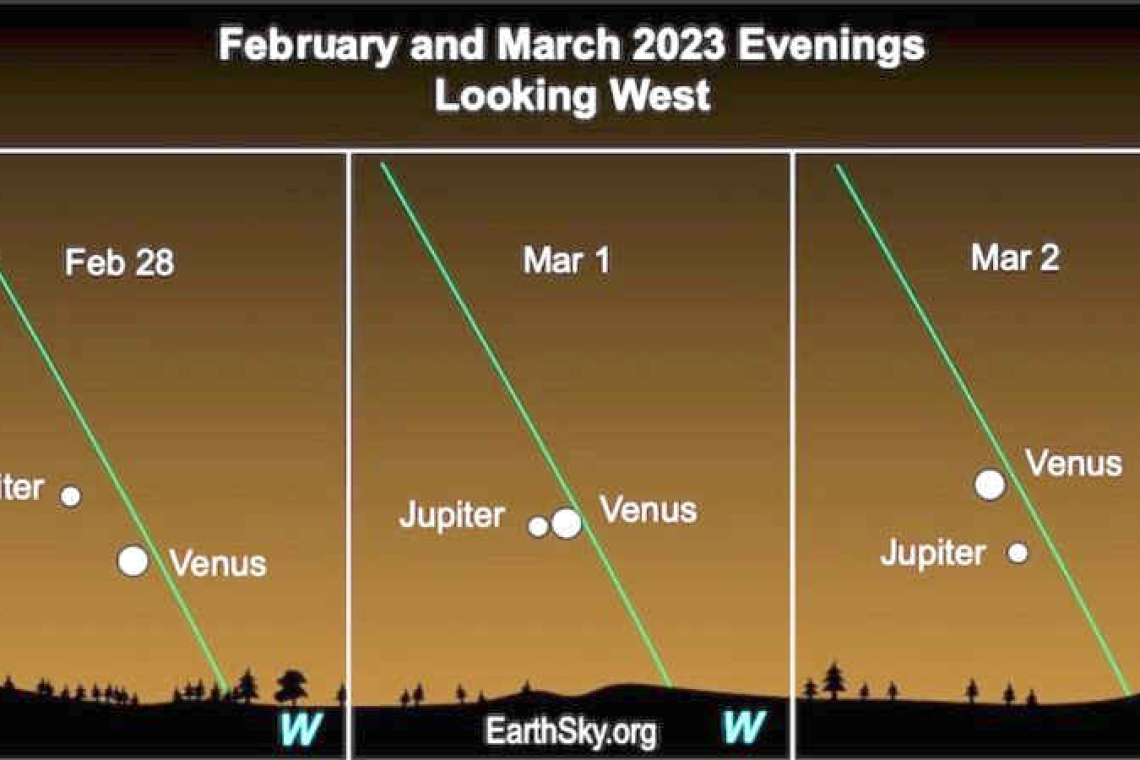~ St. Maarten’s Backyard Astronomy for February 24-26 ~
Sun rises at 6:33am
Sun sets at 6:16pm
Lunar phase: 2nd quarter, waxing gibbous
Moon rises at 10:23am
Moon sets at 11:39pm
This weekend, let’s go for a planet hunt. We will start by looking for the planet Venus – the brightest of the five visible planets. The “Goddess of Love” planet is climbing higher each night, but it remains as the evening star for now. You can’t miss it in the western sky in the hours after sunset.
Venus is currently moving closer to our second brightest planet, Jupiter. Watch for these two bright worlds in the western twilight. As we near the end of this month, you will see these two dazzling points of light shining down on us; but Jupiter is slowly creeping away towards the horizon. Keep track of these two planets as the weeks progress.
Venus and Jupiter will have a spectacular conjunction in the twilight sky on March 1. Don’t miss them in late February and early March! They are both very bright!
Mars is high in the evening sky, noticeably red in colour, setting several hours after midnight. It’s currently within the constellation Taurus the Bull. Mars is currently brighter than most stars, even though it’s shrinking and fading since its recent opposition on December 8, 2022. That’s when the Earth passed between Mars and the sun in their orbital paths. The Earth is now ahead of Mars in our smaller, faster orbit around the sun. This is why Mars is appearing to become less bright. Look for the moon to sweep past Mars at the end of this month.
Saturn is not among our planets to search for. Why? Because it is currently in close proximity to the sun, having passed behind the sun (from our perspective) on February 16.
Mercury is also not visible from our locale here in St. Maarten. Star gazers in the southern hemisphere will keep Mercury in view in the predawn eastern sky for a few more weeks.
The planets are worlds, with their own gravity and their own moons. Maybe someday, a human being will stand on one of these worlds and look back at Earth, seeing only a spec of light, and wonder what it is like there.
Thank you for keeping up with the Night Sky articles, backyard astronomy designed for St. Maarten sky viewing. FYI: If you are out later on in the week, note that each star rises about four minutes earlier each day than written here, and the moon rises 50 minutes later. Night Sky is researched and compiled by Lisa Davis-Burnett. Earthsky.org is a key resource for information and images. Questions or comments? Email This email address is being protected from spambots. You need JavaScript enabled to view it.







